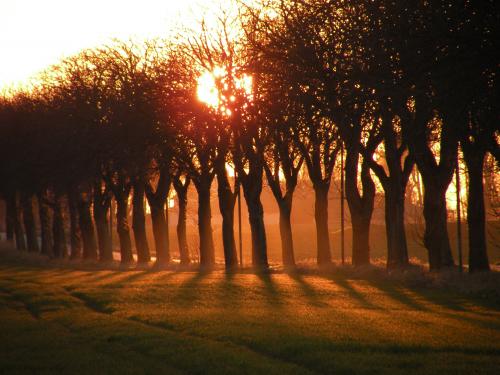To empower European forestry and arboriculture we need to embrace protest and celebration

Photo Credit: Ida Wallin
by Pip Howard @Europeantrees, Director of Forestcomms UK – a partner in the EU Seventh Framework project HERCULES (HERitage in CULtural LandscapES)
A couple of months ago I read an online article about continued deforestation of African rainforest. The article, as important as all others on deforestation issues, used a banner photograph, a stock image of a harvesting machine in a Northern spruce forest!
Such errors are commonplace and hugely damaging. As the issues of worldwide deforestation problems remain, the ongoing poor communication of the European forestry and arboricultural industries will inevitably be confused by an all too easily confused general media and dragged mercilessly into such emotive issues.
A chainsaw for many people is a symbol of evil as much as a gun is; a perception completely at odds with the fact that European forestry in the main is at the forefront of sustainable development goals in Europe and further.
In Europe forestry continues as the poor, weak cousin of farming when discussed in the general media and enters as such into subsequent modern policy making. For so long the necessary evil of PR to others in the world around us has been completely at odds with the axioms of forestry. For the general media an assumption is continually upheld that the public only want ‘right or wrong’; ‘yes or no’; and better still ‘winner or loser’ - forestry with its fifty thousand shades of grey cannot be packaged as such. Thus we see disproportionate attention to single issues – even to the extent, as in Britain at the moment, that only one of the myriad of diseases is satisfactorily reported and unfortunately budgets are drawn up accordingly.
But there is a rescue package – social media, which continues to gather strength rapidly and in doing so is starting to influence policy. Social media allows the local landscapes we work in to be under as much scrutiny as all others worldwide, this is a good thing for us. Effective forest and tree communication can finally happen allowing the complexities and diversity of what we are charged with to be illustrated location by location if need be.
We foresters and arboriculturalists are charged with the management of the most dominant natural feature in landscapes urban and rural, our work is highly visible. ‘Landscape’ as a base platform for progressive land management planning is hugely beneficial to many foresters and other tree professionals who are generally more used to incorporating diverse issues and interests than their peers in other areas of land management. Therefore the very progressive European Landscape Convention, and research and policy surrounding it, should be a tool of immense benefit to European forestry. And as the ideals contained within this work slowly but surely enters the wider public consciousness social media, which almost seems purpose built for landscape discussion, will assuredly become the hub for such discussion leading to progressive policy making and good practice.
Protest is the moment when most people become active over their landscape. These people will head ‘online’ and we need to be there to help and in doing so we will reduce costs to everyone.
There are many on social media who are there to celebrate trees. Many foresters and arboriculturalists may well feel uncomfortable about being seen as ‘treehuggers’ and will therefore understandably shy away from involving themselves with such people. However celebrating trees if done well is a highly effective, and cheap, method to engage communities with the trees in their landscape as well as empower tree and forestry professionals, (which means ultimately more money for the industry!). I would head any doubters of this towards the exceptional work carried out in Epping Forest District, North London, UK; although I am sure there are many other examples elsewhere in Europe. Christopher Neilan, author of the Capital Asset Valuation for Amenity Trees system, has worked on his ‘soft power’ approach for several years. The results are incredible; many of the population of Epping Forest District are truly in touch with their trees and those charged with working with them. Communities here are encouraged to produce their own ‘Tree Strategies’, the resulting publications (more comprehensive and easier reading than many national strategy documents) are made available to all inhabitants. On the other extreme is the European Tree of the Year Awards – a sort of Eurovision song contest for trees, but which works well beyond the limits of the competition itself.
Forest communication is not about ‘talking’ it is about listening and interacting and this does mean having to join in – which can be enjoyable as well as rejuvenating those reasons you choose to enter the profession in the first place.
Lastly, one fact emerging from social media is that people are becoming very interested in hearing directly from experts. They are fed up with fatuous information fed to them by manipulative PR and Twitter and other social media platforms provides for this new thirst for knowledge. It can only be a good thing that those we consider our luminaries in forestry and arboriculture, be they academic or practitioner, gain recognition in the wider public arena.





Comments
Post new comment